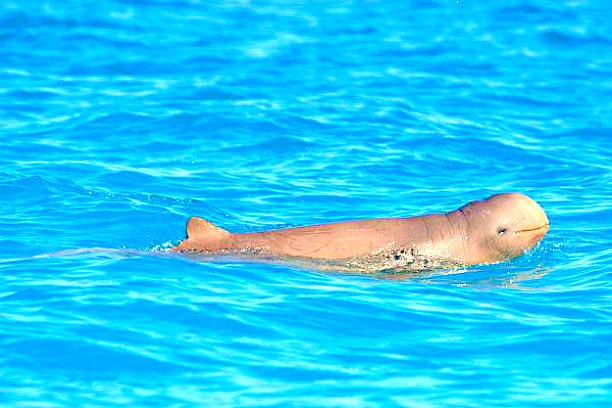ERROR : Server Busy(-1105)
ERROR : Server Busy(-1105)
Australian snubfin dolphin (Orcaella heinsohni)
The Australian snubfin dolphin, Orcaella heinsohni (Beasley, Robertson, Arnold, 2005), is a recently recognized species of dolphin first described in 2005.
It closely resembles and is closely related to the Irrawaddy dolphin, and until it was described in 2005, it was thought to be an Irrawaddy dolphin. However, the Australian snubfin dolphin is three-coloured, while the body of the Irrawaddy dolphin only has two colours. The skull and the fins are also slightly different between the two species.
Experts say the discovery of a new mammal is extremely rare. In fact, the Australian snubfin is the first new dolphin species to be discovered in 56 years! Two scientists at James Cook University, Isabel Beasley and Peter Arnold, took DNA samples from the population of dolphins off the coast of Townsville, Queensland and sent them to the National Oceanic and Atmospheric Administration's Southwest Fisheries Science Center in La Jolla, California. The results showed that George Heinsohn (an Australian biologist who worked at James Cook University in the 1960s and 1970s on dolphin species for whom Orcaella heinsohni is named) was correct in his hypothesis that the Townsville population was a new species. Beasley noted that the snubfin has three colours; it's dark on the dorsal side, graduates to a light brown on the flanks, and has a white belly. They have a rounded melon, which is very unlike other dolphin species in Australia. They also have a small, "snubby" dorsal fin, hence the name "snubfin." The Irrawaddy, unlike the Australian snubfin, is a uniform slate gray with a white belly.
Unlike its more showy cousins, such as the bottlenose dolphin, the Australian snubfin is a very shy dolphin that avoids boats. |

